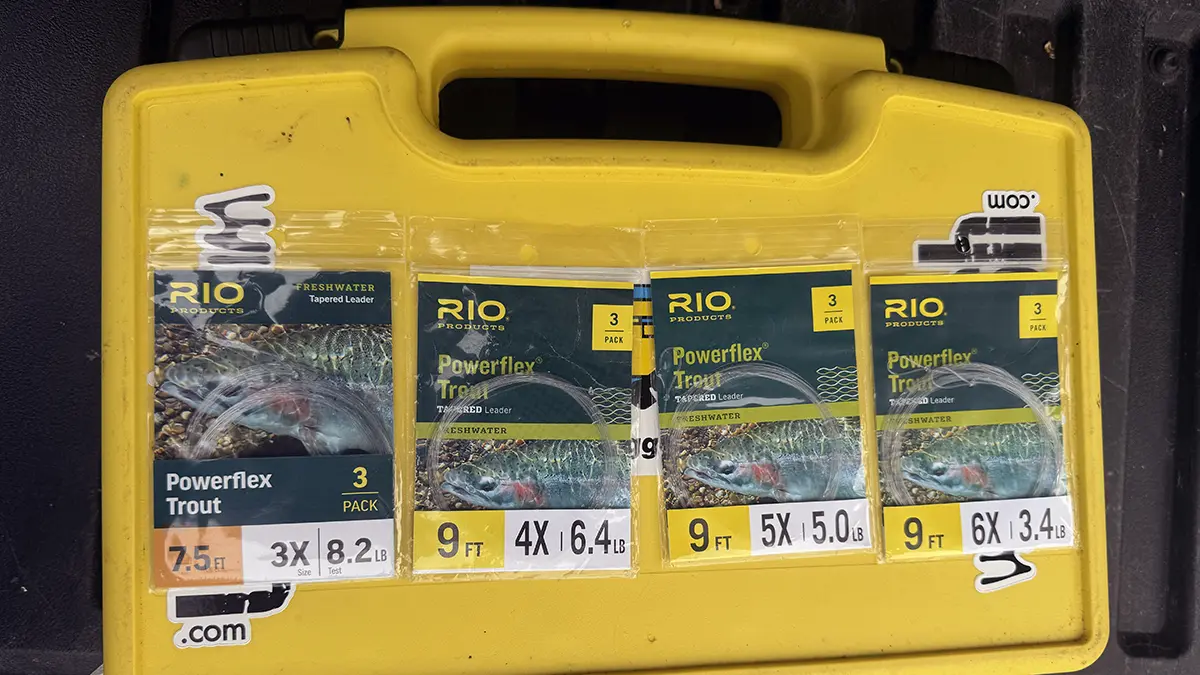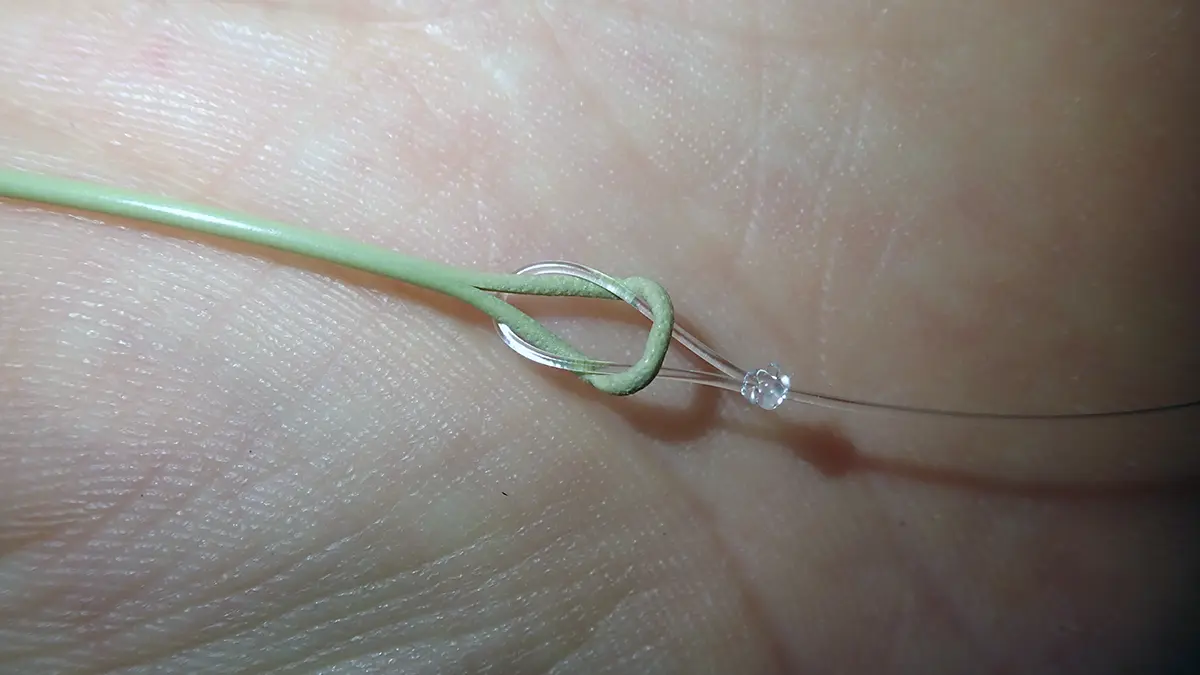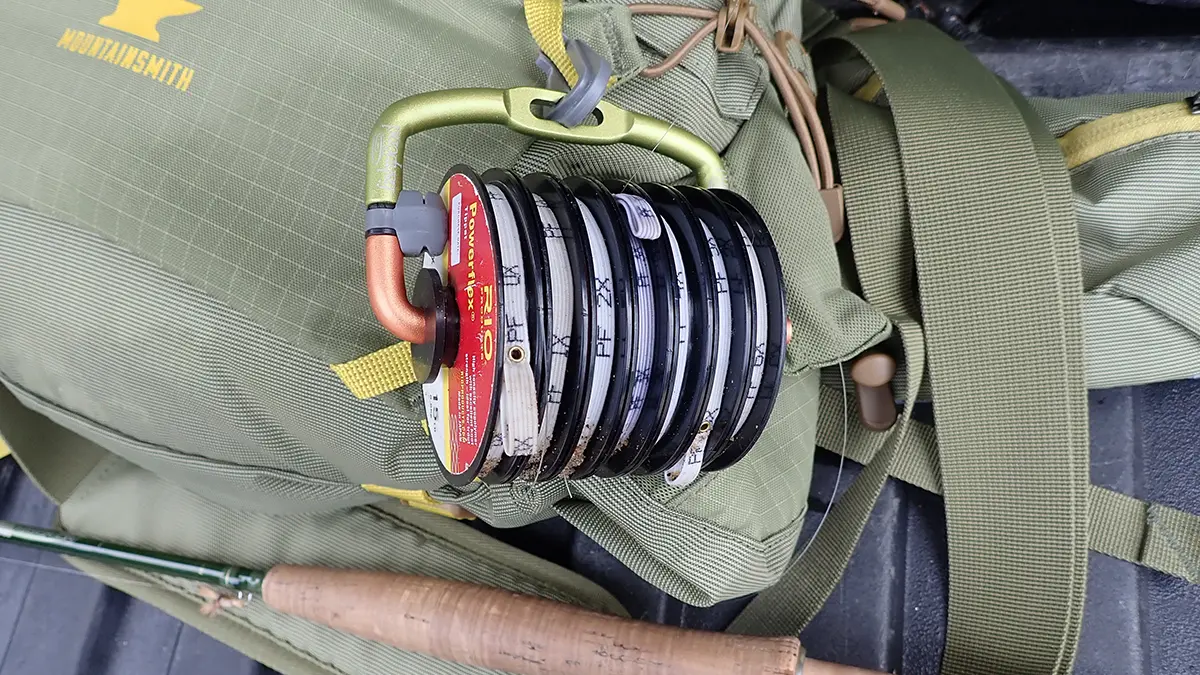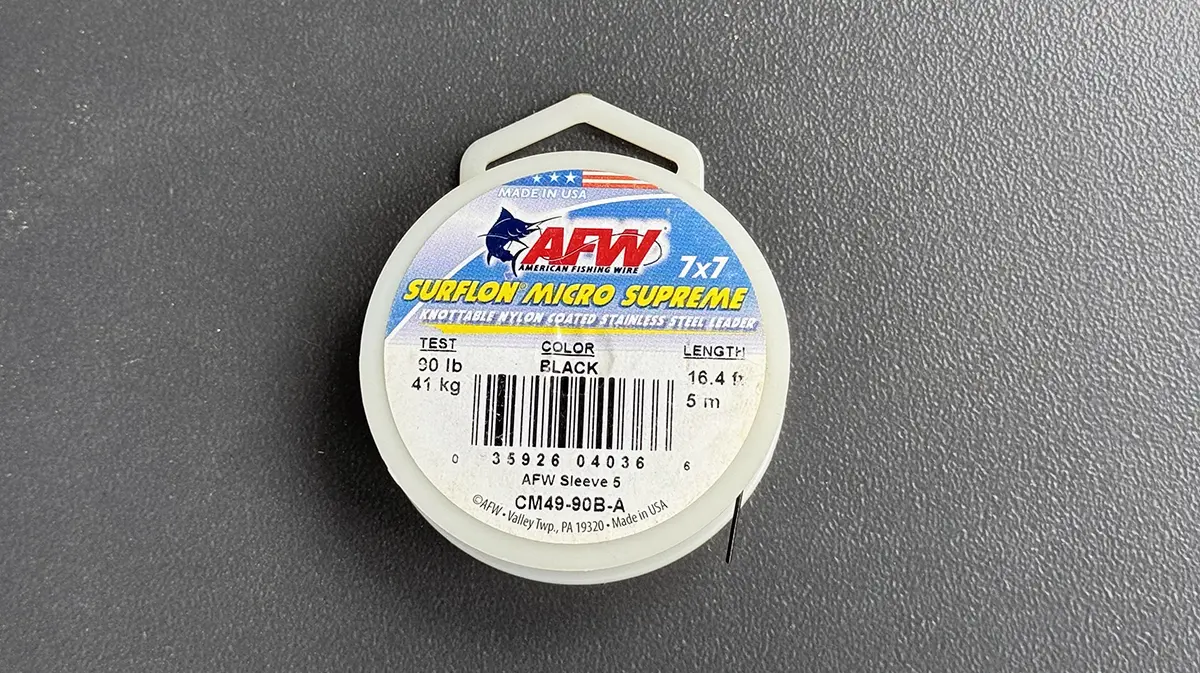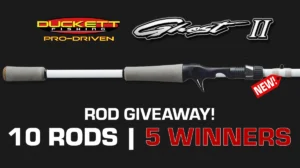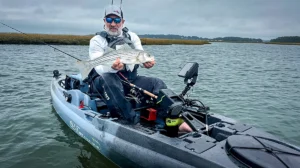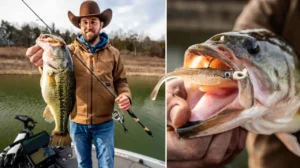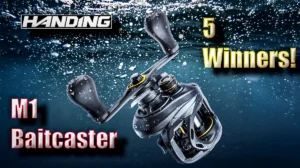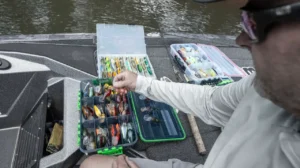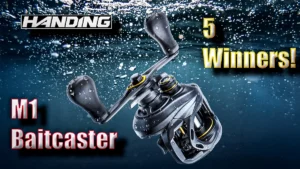Most fishing is done with thin, clear monofilament line, designed to be almost invisible, or at least unthreatening, to the fish. Most of a fly line, however, is a relatively thick plastic cord, usually 90 feet long, that’s easily visible to fish and anything else with eyes. That’s why you need a leader, 10 feet or so of clear mono at the end of the fly line, usually tapered, to which the fly is tied. The kind of fishing you want to do determines how long and how strong your leader should be.
WHY HAVE A LEADER?
Why is the fly line a thick cord? A fly line needs to have mass and weight, because that’s what you cast—not the flies themselves, which are usually close to weightless. In every other kind of rod-and-reel fishing, you use the rod to throw the bait or lure, which then flies to the water, pulling the line behind it. In fly-fishing, you throw the line itself.
The leader and the fly go along for the ride. Typically, the fly line is moving very quickly. Part of the leader’s job is to help slow the force contained in the fly line down, so that the fly lands on the water as gently as possible. This is imperative when dealing with spooky species such as salmon and trout, but is helpful in any situation.
LINE + LEADER + TIPPET
Here’s how it sets up. Most fly lines have a loop at the end for attaching the leader, and most store-bought leaders have a loop for the same purpose. A loop-to-loop connection is an easy way to connect the leader to the line. If your leader doesn’t have a loop, the surgeon’s loop knot is an easy way to make one.
Some anglers find the loop-to-loop connection “hingey” and prefer to attach the leader to the fly line with an Albright or a nail knot. These knots are a little more involved, but do seem to provide a smoother transfer of power during the cast. I’m OK with loop-to-loop, and it certainly makes swapping leaders easier on the water.
You may need to add mono to your leader because fly changes are shortening the original, or because you need some extra distance from the fly line for a fussy fish. The last couple of feet at the tip of the leader, where the fly is tied on, is known as the tippet and can be added on from spools. The double surgeon’s knot is a simple way to add tippet, though there are other methods including blood and uni-to-uni knots. Now that you have the concept down, let’s look at some of the considerations in choosing and using a fly-fishing leader.
TO TAPER OR NOT TO TAPER
Trout fishing employs tapered leaders for two reasons. First, a heavy, easily visible leader seems to make trout uncomfortable and unlikely to bite, so a thin, light tippet is helpful. The second reason is that a tapered leader presents the fly nicely, with a gentle landing, right where you want it to be.
Tapered leaders aren’t as necessary for bigger-game fly-fishing. When I fish for striped bass, I use around 8 or 9 feet of 15- or 20-pound mono, with no taper. A perfect fly landing isn’t very important in saltwater fishing. Due to bass, bluefish, and other saltwater species pulling pretty hard, I want the high breaking test for every inch of the leader.
Many fly-fishers don’t bother with a tapered leader for big freshwater species like pike or musky, but others do. Pre-made tapered leaders for all species are available commercially, or you can make your own by knotting together segments of different-sized mono.
THE X FACTOR
Most kinds of fishing classify monofilament by its pound-test, or how much weight will cause it to break. Mono can also be described by its actual diameter. For example, the 15-pound mono I often use for bass is 0.016-inch thick.
For reasons that date back to misty history, fly-fishing classifies the tippet of a leader with a numeral and an X. A 2X tippet has a roughly 10-pound breaking strength, while an 8X tippet theoretically breaks at less than 2 pounds. (Different manufacturers cite different figures.) For tippet stronger than 0X, fly tippets are described simply by the breaking test or line diameter.
Having the right tippet does more than assure your trout won’t break off. It also makes it easier to cast your fly well. A rule of thumb is to divide the hook size by 3 to figure out which tippet to use. If your fly has a size 12 hook, it will cast nicely with a 4X tippet. If you’re casting a little size 18 fly, 6X is a better choice.
Large, bulky flies such as bass bugs require heavy tippets to turn over effectively. In the hands of a skilled caster, 3X might work well. Although typically, anglers throwing large, wind-resistant flies such as Dahlberg Divers, Game Changers and the like are going to use 2X or larger. Saltwater quarry other than bonefish or other spooky critters may be best pursued with tippet 0X or greater. The same can be said of giant salmon in swift rivers.
LEADER LENGTH
Fish fine and far off, the old saying goes. Especially when dry-fly fishing for trout, the longest leader you can comfortably handle will help to avoid spooking the fish. The classic all-around trout leader is 9 feet long, tapered to 5X, which will comfortably handle flies from size 12 to 16 and all but the biggest trout. However, if you’re casting dry flies to wary fish on a calm-surfaced stream, such as the Delaware River for example, a 12-foot leader is preferable. The fly will drift more naturally and there is less chance of the fish seeing the line.
Stealth is not quite as necessary when drifting nymphs along the bottom, so the 9-foot leader would suffice. The same is true when fishing streamers, or flies designed to imitate bait fish. With a floating fly line, 9 feet is plenty and with a sinking line, a leader as short as 4 feet is best. It makes casting easier and keeps the fly at the correct depth.
Bass anglers may need leaders as long as 9 feet to throw dries to rising fish, but often they are better served with a 7.5 footer to turn over poppers and divers effectively. Saltwater anglers may be able to get away with leaders as short as 6 feet, particularly if the water is cloudy with suspended sand or other debris.
NYLON OR FLUOROCARBON?
Nylon monofilament is pretty good for making a leader hard to see, or at least unobtrusive. Fluorocarbon is even less visible, with a refractive index closer to water; many trout fishers swear by it. Fluorocarbon is also more dense, which helps sub-surface flies to sink, which can make it a poor choice for dry fly action. It has very little stretch compared to mono, and it’s more resistant to abrasion from underwater rocks or other obstructions. Fluorocarbon is also more expensive, and its slippery surface can make tying some knots a bit tricky. For most uses, nylon mono is fine but consider these factors when making your decision.
TOOTHY CRITTERS
Species like bluefish, Spanish mackerel, northern pike, and muskellunge have mouths full of sharp teeth that can bite right through monofilament leaders. The solution here is a short length of wire. No, wire is not invisible or even unobtrusive, but these aggressive predators don’t seem to mind. It’s best to use wire made for leaders. This stuff is remarkably easy to tie knots with and holds up to those dagger-like teeth. A bite leader of very heavy (50-pound) nylon mono is also an option. Tie a swivel to the leader end and a snap to the fly end.
TIE IT ALL TOGETHER
Hopefully, you now understand the role fly line, leader and tippet play in casting, hooking, and landing fish. Make your selections based on the species you pursue, and the conditions you expect to experience. Now get out there, toss some flies and catch some fish.


